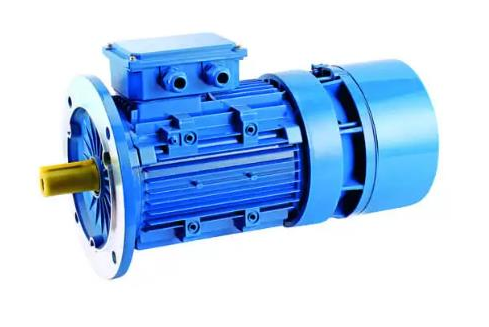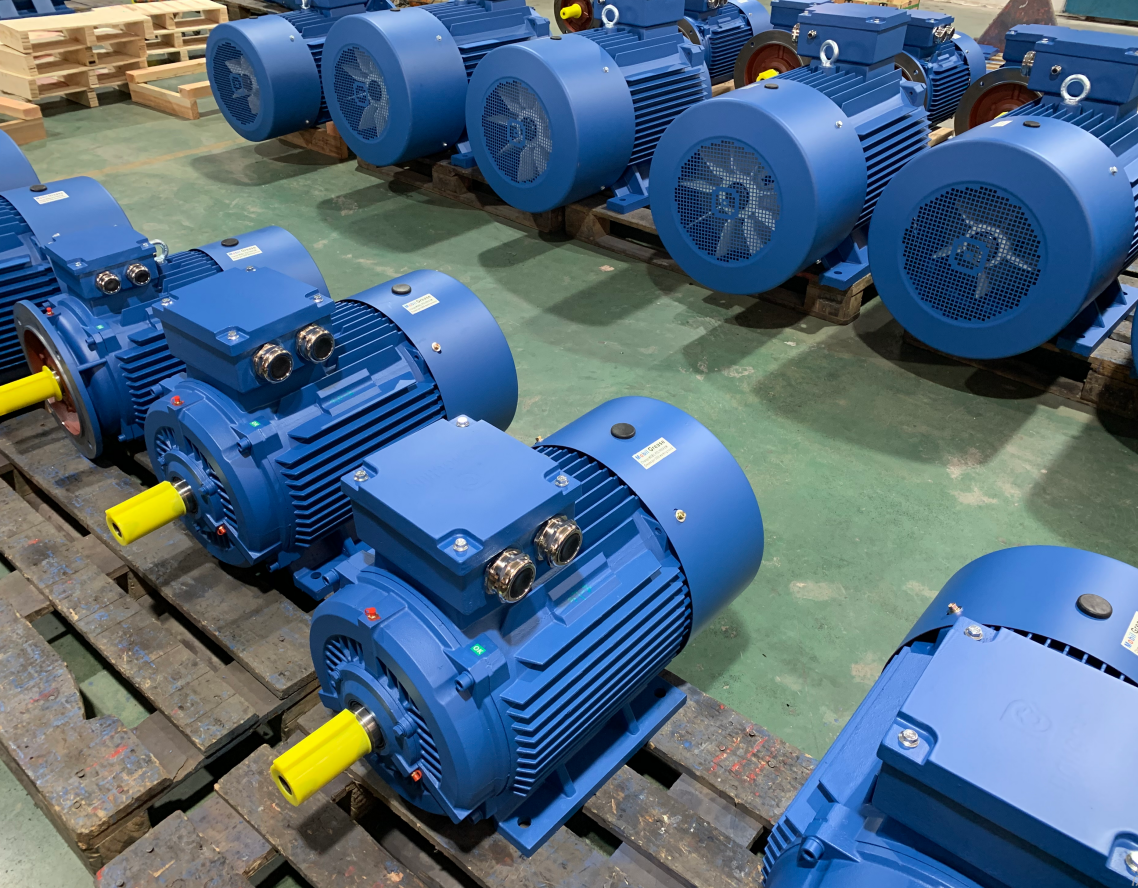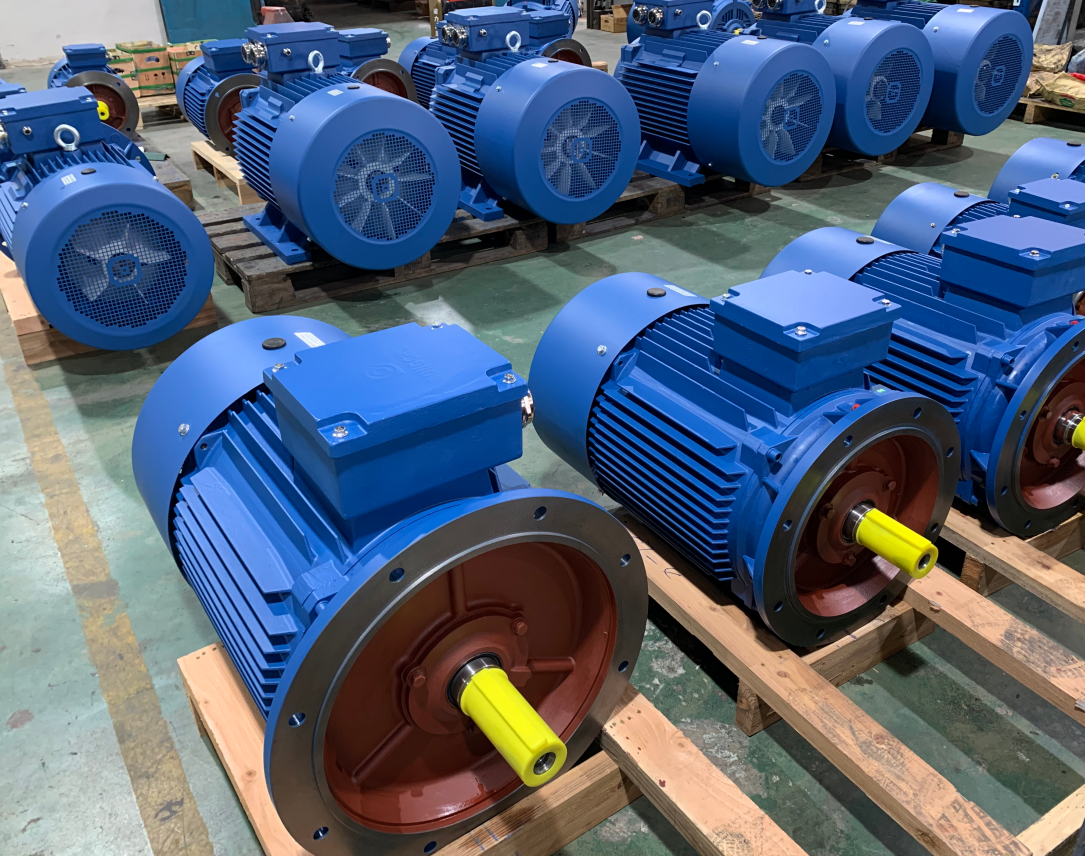The basic elements needed for motor selection are: type of load driven, rated power, rated voltage, rated speed, and other conditions.
The type of load driven
This has to be reversed from the motor characteristics. Motors can be simply divided into DC motors and AC motors, AC is also divided into synchronous motors and asynchronous motors.
1、DC motors
The advantage of DC motor is that the speed can be easily adjusted by changing the voltage, and can provide a larger torque.
It is suitable for loads that require frequent speed adjustment, such as rolling mills in steel mills, hoists in mines, etc.
But now, with the development of frequency conversion technology, AC motors can also adjust the rotational speed by changing the frequency.
However, although the price of inverter motor is not much more expensive than ordinary motor, but the price of inverter occupies the main part in the whole set of equipment, so brushed DC motors have another advantage of being cheaper.
The disadvantage of DC brushless motors is that the structure is complex, and any equipment with a complex structure is bound to lead to an increase in the failure rate.
DC motor compared to AC motor, in addition to the winding complexity (excitation winding, commutation pole winding, compensation winding, armature winding), it also adds slip ring, brush and commutator.
Not only does it require a high level of craftsmanship from the manufacturer, but also the post maintenance cost is relatively high.
Therefore, DC gear motors in industrial applications is in a gradually declining but still useful in the transition phase of the embarrassing situation.
If the user has more funds, it is recommended to choose AC motor with inverter program, after all, the use of inverter also brings many benefits, this is not detailed.
2、Asynchronous motor

Asynchronous motor has the advantage of simple structure, stable performance, easy maintenance, cheap. And manufacturing process is also the simplest.
I have heard the workshop of the old technician said, assembly of a brushless DC motors used man-hours, can complete almost the power of two synchronous motors or four asynchronous motors, which can be seen.
Therefore, asynchronous motors have been most widely used in industry.
Asynchronous motors are divided into squirrel-cage motors and wire-wound motors, and the difference lies in the rotor.
The rotor of squirrel cage motor is made of metal bars, copper or aluminum.
The price of aluminum is relatively low, and China is a large aluminum mining country, and is widely used in less demanding applications.
But the mechanical properties and electrical conductivity of copper are better than aluminum, the vast majority of my contacts are copper rotors.
Squirrel cage type motor in the process of solving the problem of broken row, the reliability is far more than the winding type rotor motor.

The disadvantage is that the torque obtained by a metal rotor cutting magnetic induction lines in a rotating stator field is small and the starting current is large, making it difficult to handle loads with large starting torque requirements.
Although more torque can be obtained by increasing the length of the motor core, the effort is very limited.
Wire-wound motors energize the rotor winding through slip rings during starting, forming a rotor magnetic field that moves relative to the rotating stator magnetic field, thus obtaining more torque.
And the water resistance is connected in series to reduce the starting current during the starting process.

The water resistance is controlled by a sophisticated electronic control device to change the resistance value with the starting process.
It is suitable for loads such as rolling mills and hoists.
As the wire-wound asynchronous motor relative to the squirrel cage motor increased slip ring, water resistance, etc., in the overall equipment price has increased.
Its speed range is narrower and torque is relatively small compared with DC motors, and the corresponding value is low.
However, asynchronous motor due to the stator winding energized to establish the rotating magnetic field, and the winding belongs to the inductive components do not do work, to absorb reactive power from the grid, the impact on the grid is very large.
Intuitive experience has a high-power inductive appliances connected to the grid, the grid voltage drops, the brightness of electric lights are reduced at once.
Therefore, the power supply bureau will have restrictions on the use of asynchronous motors, which is where many factories must be considered.

Some large users of electricity, such as steel mills, aluminum plants, etc., choose to establish their own power plants to form their own independent power grid, in order to reduce the restrictions on the use of asynchronous motors.
So asynchronous motor needs to be equipped with reactive power compensation device if it wants to meet the use of high power load, while synchronous motor can provide reactive power to the grid through excitation device, the larger the power the more obvious the advantage of synchronous motor, thus the stage of synchronous motor is created.
3、Synchronous motor
The advantages of synchronous motor include, in addition to the over-excitation state can compensate the reactive power.
1) the speed of synchronous motor strictly abides by n=60f/p, which can precisely control the speed.
2) high operational stability, when the grid voltage drops suddenly, its excitation system will generally force excitation to ensure stable motor operation, while the asynchronous motor torque (proportional to voltage squared) will drop significantly.
3) greater overload capacity than the corresponding asynchronous motor.
4) High operating efficiency, especially for low-speed synchronous motors.
Synchronous motors cannot be started directly, and need asynchronous starting or frequency starting.
Asynchronous start means that synchronous motor is equipped with a starting winding similar to the cage winding of asynchronous motor on the rotor, and an additional resistance of about 10 times of the resistance value of the excitation winding is connected in series in the excitation circuit to form a closed circuit.
So that the stator of synchronous motor is directly connected to the power grid and started as an asynchronous motor, and then the additional resistance is removed when the speed reaches sub-synchronous speed (95%); frequency conversion start is not much Not much to mention.

Therefore, one of the disadvantages of synchronous motors is the need to add additional equipment devices for starting.
Synchronous motors run on excitation current, without excitation, the efficient motor is asynchronous.
The excitation is a DC system added to the rotor, and its rotational speed and polarity are the same as that of the stator.
If there is a problem with the excitation, the stepper motor will be out of step and cannot be adjusted, which will trigger the protection "excitation fault" and the motor will trip.
Therefore, the second disadvantage of synchronous motor is that it needs to increase the excitation device, which used to be supplied directly by DC machine, but now it is mostly supplied by silicon controlled rectifier.
As the old saying goes, the more complex the structure and the more devices, the more fault points and the higher the failure rate.
According to the performance characteristics of synchronous motor, its application is mainly in hoist, mill, fan, compressor, rolling mill, pump and other loads.
To sum up, the principle of choosing motor is to give preference to the motor with simple structure, cheap price, reliable work and convenient maintenance under the premise that the motor performance meets the requirements of production machinery.
In this regard, AC motor is better than DC motor, AC asynchronous motor is better than AC synchronous motor, squirrel cage asynchronous motor is better than wire-wound asynchronous motor.
For continuous running production machinery with smooth load and no special requirements on starting and braking, it is preferable to use ordinary squirrel cage asynchronous motor, which is widely used in machinery, pumps, fans, etc.

Starting, braking more frequently, requiring a larger starting, braking torque production machinery, such as bridge cranes, mine hoists, air compressors, irreversible rolling mills, etc., should use wire-wound asynchronous motor.
If there is no requirement for speed regulation, but the speed needs to be constant or the power factor needs to be improved, synchronous motor should be used, such as medium and large capacity water pump, air compressor, hoist, mill, etc.
If the speed range is above 1:3, and the production machinery needs continuous stable and smooth speed regulation.
It is appropriate to use other excitation DC motor or squirrel cage asynchronous motor or synchronous motor with frequency regulation, such as large precision machine tool, gantry planer, steel rolling mill, hoist, etc.
Requires a large starting torque, mechanical characteristics of soft production machinery, the use of series-excited or compound-excited DC motor, such as trams, motor vehicles, heavy cranes, etc.
The rated power of electric motors
The rated power of electric motor refers to the output power, i.e. shaft power, also called capacity, which is the landmark parameter of larger motors.
People often ask how big the induction motors is, usually it does not refer to the size of the motor, but to the rated power.
It is the most important index to quantify the motor's ability to drag the load, and it is also the parameter requirement that must be provided when the motor is selected.
(is rated power, is rated voltage, is rated current, cosθ is power factor, η is efficiency)
The principle of correct selection of stepper motors capacity should be the most economical and reasonable decision of motor power under the premise that the motor is capable of producing mechanical load requirements.
If the power is chosen too large, the equipment investment will increase and cause waste, and the motor will often run under load, and the efficiency and power factor of AC motor will be low; on the contrary, if the power is chosen too small, the gear motor will run overload and cause premature damage to the motor.
There are three factors to decide the main power of the dc gear motor.

(1) The heat and temperature rise of the motor, which is the most important factor to decide the power of the motor.
2) Allowable short time overload capacity.
(3) The starting capacity of asynchronous squirrel-cage motor should be considered.
First of all, the specific production machinery calculates and selects the load power according to its heat generation, temperature rise and its load requirement.
Then the motor preselects the rated power according to the load power, working system and overload requirement.
After the rated power of the motor is pre-selected, it should be checked for heat generation, overload capacity and starting capacity when necessary.
If one of them is not qualified, the motor must be re-selected and calibrated again until all of them are qualified.
Therefore, the working system is one of the necessary requirements, if there is no requirement, the default is to deal with the most conventional S1 working system; motors with overload requirements also need to provide overload multiplier and corresponding running time; asynchronous squirrel cage motor driving fan and other large rotating inertia load, but also need to provide the load rotating inertia and starting resistance torque curve to check the starting capacity.
The above selection of rated power is made under the premise of standard ambient temperature of 40℃.
If the ambient temperature where the motor works changes, the rated power of the motor must be corrected.
According to theoretical calculation and practice, the power of the motor can be roughly increased or decreased according to the table below while the ambient temperature is different.
Therefore, it is also necessary to provide the ambient temperature in harsh climate areas, for example, India, the ambient temperature needs to be calibrated at 50℃.
In addition, high altitude will also have an impact on the servo motors power, the higher the altitude, the higher the temperature rise of the motor, the lower the output power. And the motor used in high altitude also needs to consider the effect of corona phenomenon.
For the power range of motors in the market, we would like to list a few data for reference.
DC motor: ZD9350 (mill) 9350kW
Asynchronous motor: squirrel cage type YGF1120-4 (blast furnace fan) 28000kW
Wire-wound YRKK1000-6 (raw material mill) 7400kW
Synchronous motor: TWS36000-4 (blast furnace fan) 36000kW (test unit reaches 40000kW)
Rated voltage
The rated motor voltage refers to the line voltage in the rated operating mode.
The selection of the rated voltage of the motor depends on the supply voltage of the electric power system to the enterprise and the size of the motor capacity.

The choice of voltage level of AC motor mainly depends on the voltage level of power supply in the place of use.
Generally, the low voltage network is 380V, so the rated voltage is 380V (Y or △ connection), 220/380V (△/Y connection), 380/660V (△/Y connection) 3 kinds.
Low-voltage motor power increases to a certain extent (such as 300KW/380V), the current is limited by the capacity of the wire is difficult to do large, or the cost is too high.
Need to achieve high power output by increasing the voltage.
High-voltage grid supply voltage is generally 6000V or 10000V, foreign countries also have 3300V, 6600V and 11000V voltage level. The advantages of high-voltage motors are high power and strong ability to withstand shocks; the disadvantage is that inertia is large, starting and braking are difficult.
The rated voltage of DC motor also has to match with the power supply voltage.
Generally 110V, 220V and 440V. 220V is the common voltage level, high-power motors can be increased to 600 ~ 1000V.
When the AC power supply is 380V, with three-phase bridge-type silicon controlled rectifier circuit power supply, the rated voltage of the DC motor should be selected 440V, when the three-phase half-wave silicon controlled rectifier power supply, the rated voltage of the DC motor should be 220V.
The rated speed
The rated speed of the motor, refers to the speed in the rated mode of operation.
Both the motor and the working machinery dragged by it have their own rated rotational speed.
When choosing the speed of the motor, it should be noted that the speed should not be too low, because the lower the rated speed of the motor, the more the number of stages, the larger the volume, and the higher the price; at the same time, the speed of the motor should not be too high.
Because it will make the transmission mechanism too complicated and difficult to maintain.
In addition, when the power is certain, the motor torque is inversely proportional to the speed.
Therefore, those who start and brake not high requirements can compare several different rated speeds in terms of initial investment, floor space and maintenance cost, and finally determine the rated speed; and often start, brake and reverse.

But the duration of the transition process does not affect productivity, in addition to considering the initial investment, mainly to choose the speed ratio and rated speed of the motor in terms of the minimum loss of the transition process.
For example, the hoist motor, need frequent forward and reverse rotation and torque is very large, the speed is very low, the motor volume is huge, expensive.
When the motor speed is high, also need to consider the critical speed of the motor. Motor rotor in operation will occur vibration, rotor amplitude with the increase in speed and increase to a certain speed when the amplitude reaches a maximum (also known as resonance), more than this speed after the amplitude with the speed increases gradually reduce, and stable in a certain range, the rotor amplitude of the maximum speed is called the rotor critical speed.
This speed is equal to the rotor's inherent frequency.
When the speed continues to increase, close to 2 times the inherent frequency of the amplitude will increase again, when the speed is equal to 2 times the inherent frequency is called the second-order critical speed, in turn, there are third-order, fourth-order and other critical speed.
If the rotor runs at the critical speed, there will be violent vibration, and the bending of the shaft will increase significantly, and the long operation will cause serious bending and deformation of the shaft, and even break.
The first-order critical speed of the motor is generally above 1500 rpm, so the conventional low-speed motor generally does not consider the effect of critical speed.
Conversely, for 2-pole high-speed motors with rated speeds approaching 3000 rpm, the effect needs to be considered and the motor needs to be avoided for long-term use in the critical speed range.
Generally speaking, the motor can be roughly determined by providing the type of load to be driven, the rated power, rated voltage and rated speed of the motor.
However, these basic parameters are not sufficient if the load requirements are to be optimally met.
Other parameters to be provided include: frequency, operating system, overload requirements, insulation level, protection level, rotational inertia, load resistance torque curve, installation method, ambient temperature, altitude, outdoor requirements, etc., depending on the specific situation.
Select the perfect motor from electric motor manufacturer directly -Dongchun motor China
It is a very important to find a professional electric motor manufacturer to save time.

Dongchun motor is a professional manufacturer of electric motors in China.
Please kindly check the products as follows
single phase motor: YC, YCL with cast iron body and ML , MY motor with Aluminium body
Three phase motor : IE1, IE2, IE3 motor for both cast iron body and Aluminium body
Brake motor: DC brake motor and AC brake motor
VFD motor : frequency variable drive motors.
Get a Free quote from Dongchun motor








